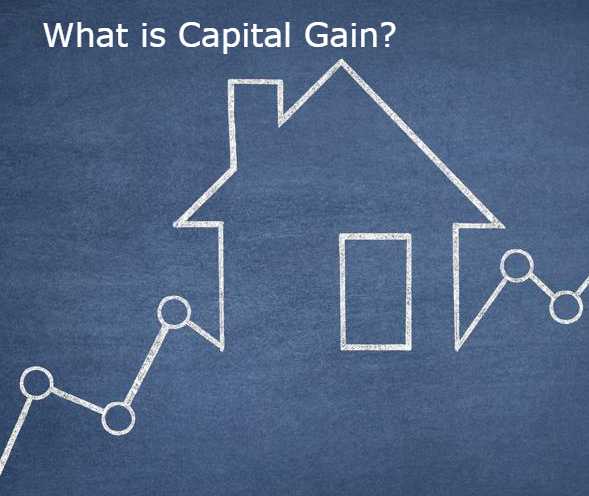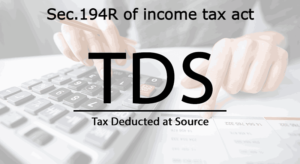Capital gain is a profit earns by selling or transferring capital assets when selling price is more than purchase price. Profit earned from transfer of assets is treated as income from capital gain under income tax act. And this profit is chargeable to tax .
For instance Transfer of Building is subject to capital gain. It is considered only in case of transfer of ownership.
Further It is if of two types under this head i.e. Long term Capital Gain (LTCG) and Short term Capital Gain (STCG).
It is chargeable to tax when net sale consideration is more than the cost of capital assets.
According to section 45(1) of income tax act “Capital Gain” means any profits or gains arising from the transfer of a capital assets effected in previous year shall be chargeable to income tax under head capital gain in previous year in which transfer takes place.
Therefore capital gains shall be chargeable to tax if following conditions are satisfied:
- Asstes transferred shall be capital asset
- It should be transferred by the assessee in previous year.
- There should be profit and gains as a result of transfer.
What is Capital Asset??
According to section 2(14) of income tax act,
Capital Asset means:
(a) Tangible and Intangible
- Property of any kind
- Held by assessee
- whether or not connected with his business or profession.
(b) Any security held by foreign institutional investor.
Following are not treated as capital assets under income tax act
- Stock in trade (other than securities held by FII)
- Movable personal effects excluding Jewellery ,Archaeological Collection,Drawing/Painting/Sculpture i.e. any art of work. Further, personal effect includes movable properties such as utensils, vehicle , household article,furniture ,wearing apparel etc.
- Rural Agricultural land
- 6.5% Gold Bond,1980 or national defence GB
- Special Bearer Bonds
- Further, Gold deposit bonds – Gold deposit scheme or deposit certificate issued under gold monetization scheme.
Note: Rural Agriculture land means
It means an agriculture land in India which is not situated in any specified area.
In brief, specified area mean agriculture land in any area comprised within the jurisdiction of a municipality or cantonment board having population of 10,000 or more.
Types of Capital Assets for computing Capital Gain
There are two types of capital assets i.e. Long-term and Short-term capital asset.
Lets elaborate these two asset:
What is Long term capital Asset (LTCA)??
According to section 2(29A) Long-term capital asset means a capital asset which is not short term capital asset. It means asset held for more than 36/24/12 months as the case may be immediately preceding the date of transfer.
In brief, Capital asset held by assessee for more than 36 months during the immediately preceding the date of its transfer .
For instance Capital asset such as Land,building and house property shall be considered as long term capital asset if owner hold it for more than 24 months.
Whereas, Following asset shall be considered as Long term capital asset if held for more than 12 months
- Equity or preference shares in a company listed on a recognized stock exchange in India.
- Securities like debentures bonds, govt. securities etc. listed on a recognized stock exchange in India.
- Units of UTI whether quoted or not.
- Units of equity oriented MF quoted or not
- Lastly, Zero coupon bonds quoted or not
And debt mutual fund held for more than 36 months is treated as long term capital assets.

What is Short term capital asset (STCG)??
According to the section 2(42A) Short term capital asset means capital asset held by an assesses for less than 36/24/12 months immediately preceding the date of its transfer/sale.
Examples of short term capital asset :
A) Assets which is held for 12 months or less:
- Listed equity/preference shares of a company held upto 12 months is short term capital assets. For instance 100 Reliance shares purchases on 01.04.2022 and sold on 31.03.2023 .
- Securities other than listed in recognised stock exchange in India (Like Debentures and Govt Securities)
- Also, Zero coupon bonds
- Units of equity oriented fund specified u/s 10(23D
B) Assets which is held for 24 months or less:
Unlisted shares,Immovable properties held for up to 24 months is treated as short term capital assets.
Note: Immovable properties means house ,land and building.
C) Assets which is held for 36 months or less:
Further ,other Assets held for 36 months. Other assess includes Gold and Jewelries.
Now we will learn capital gain
What is Long term capital Gain??
According to the section 2(29B) of income tax act long term capital gain means capital gain arising on transfer of long term capital assets i.e. capital gain arising on sale of long term capital assets .
In other words, sale is a transfer of ownership in exchange for price paid or promised to be paid.
For instance, Mr. Varun sold Building to Miss priya on 20 march 23 of Rs. 21,00,000 , which was purchased 6 years back for Rs.16,00,000.
Now, in this case Mr. Varun hold building for more than 24 months(i.e. for 6 years). Therefore capital gain earned on building is a long term capital gain and will be taxed at 20% with indexation.
What is Short term capital gain??
As per the provisions of section 2(42B) short term capital gain means capital gain arising on transfer of short term capital assets. In addition, when short term capital assets is sold out within 12/24/36 months and earns profit on such sale then it is called as short term capital gain.
Note: Transfer means transfer of ownership from one person to another person for a price paid or promised to be paid by mutual agreement or legal force.
How to calculate of capital gain ??
Moreover, Capital Gain is arises on transfer or sale of capital asset . Calculation of this gain is depends on type of asset and period of holding of an asset. Before calculating gain one should know the meaning of following terms i.e.
1. Full value of sale consideration:
It is an amount or price received by a seller in return for a capital asset.
2. Cost of acquisition:
It is price at which seller has bought the property. In means it is purchase price of an asset.For example Building purchased at 10 lakhs, this 10 lakhs is a cost of acquisition.
3.Cost of Improvement:
Cost of improvement is an amount of expenses incurred by an seller in making addition to capital asset.This includes expenses like repairing work for house ,building etc.
However for computation of long term capital gain ,instead of cost of acquisition and improvement we have to take indexed cost of acquisition and improvement.
What is Index cost of acquisition or improvement??
Index cost of acquisition or improvement is a benefit provided to the assessee on profit earned from transfer of long term capital asset. Further, Index cost is depends on inflation in country. In other words inflation adjustment is done by which cost is increased which leads to lower gain.
Further, formula for index cost of acquisition = Cost of acquisition x inflation index of the year of transfer/cost inflation index of the year of acquisition
And index cost of Improvement = Cost of improvement x inflation index of the year of transfer/cost inflation index of the year of improvement
Example how to calculate capital gain
Mr.ketan Purchased Building for Rs. 15,00,000 on 01.04.2015 and sold it on 31.03.2023 of Rs. 22,00,000 & incurred selling expenses Rs. 50,000. Further he incurred additional expenses to maintain the building is Rs. 3,00,000 on 01.04.2016. Compute Capital Gain on transfer of buiding by Mr. Ketan.
Here Building is a long term capital asset i.e. held for more than 24 months. hence we will compute long term capital gain.
| Particulars | Amount (Rs.) |
| Full value of sale consideration | 24,00,000 |
| Less: Selling expenses | (50,000) |
| Net value of sale consideration | 23,50,000 |
| Less: a) Index cost of acquisition (15,00,000×331/254) b) Index cost of improvement (3,00,000×331/264) | (19,54,724) (3,76,136) |
| Long term capital gain | 19,140 |




[…] Refer:https://taxandfinanceguide.com/what-is-capital-gain/ and https://taxandfinanceguide.com/long-term-capital-gain-tax/ […]
[…] can Refer: https://taxandfinanceguide.com/section-54-of-income-tax-act/ and https://taxandfinanceguide.com/what-is-capital-gain/ , […]